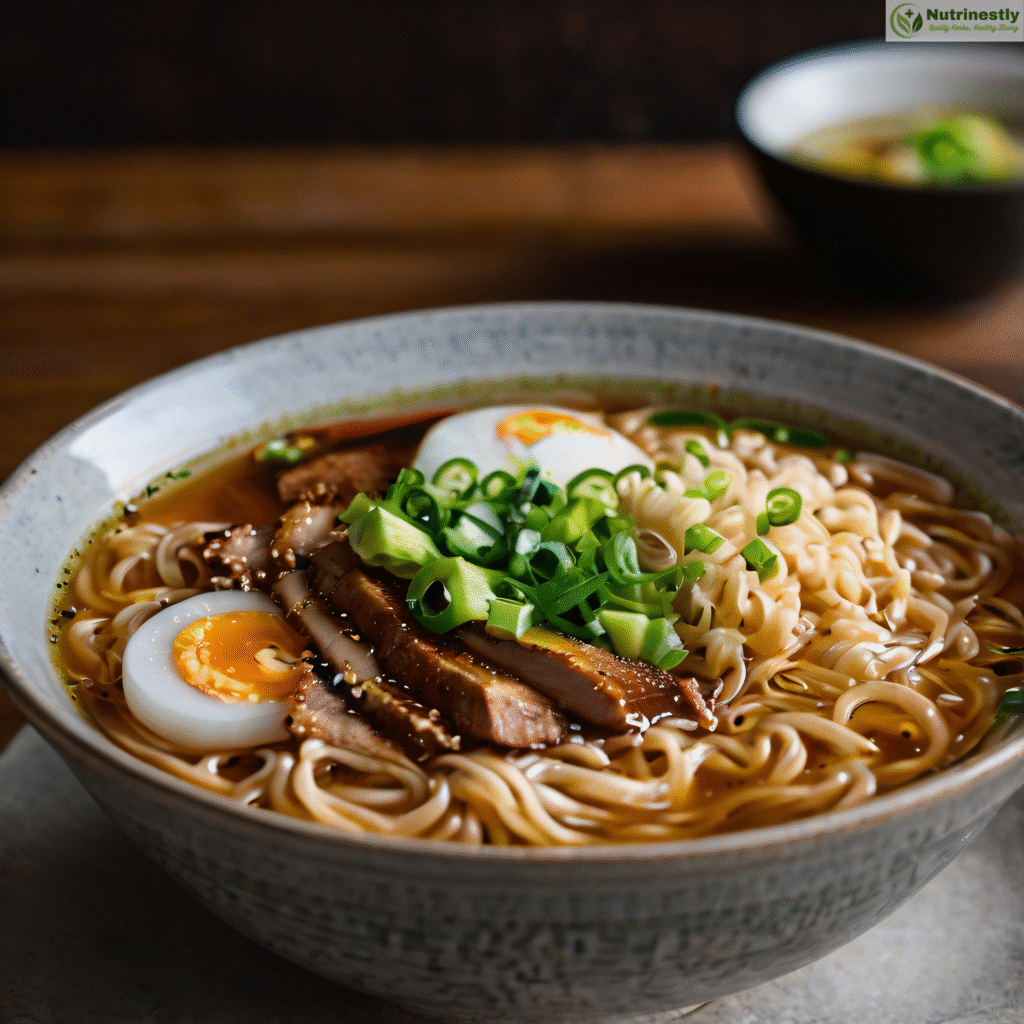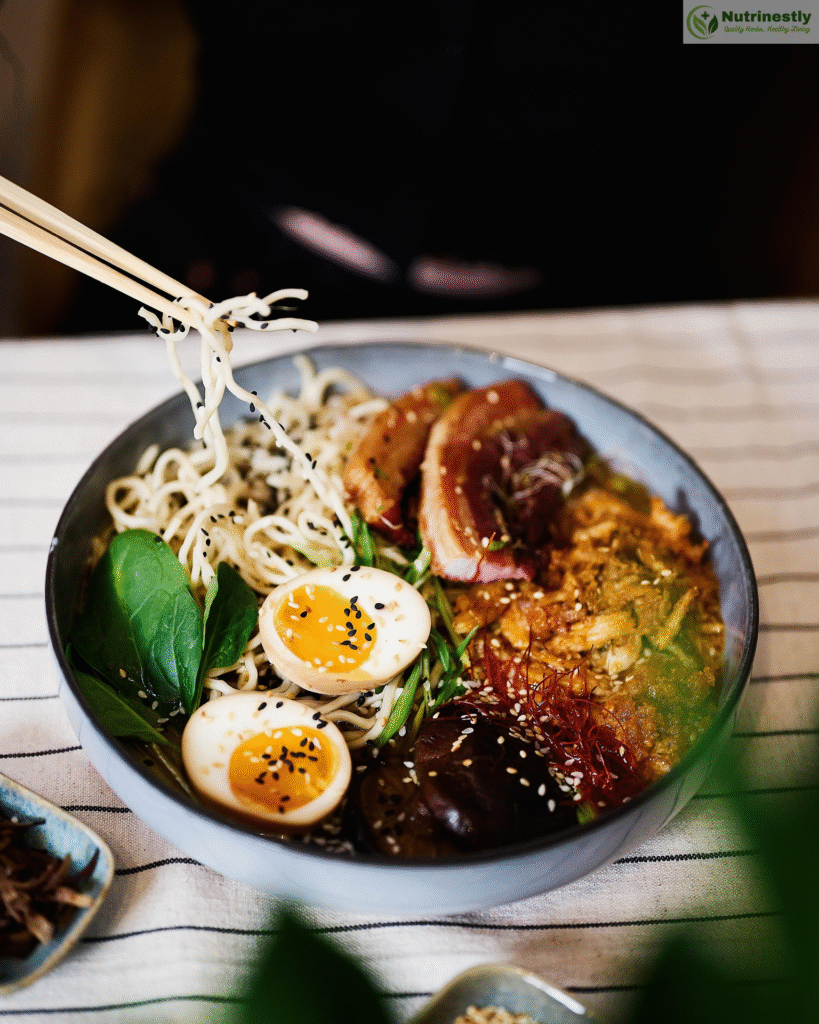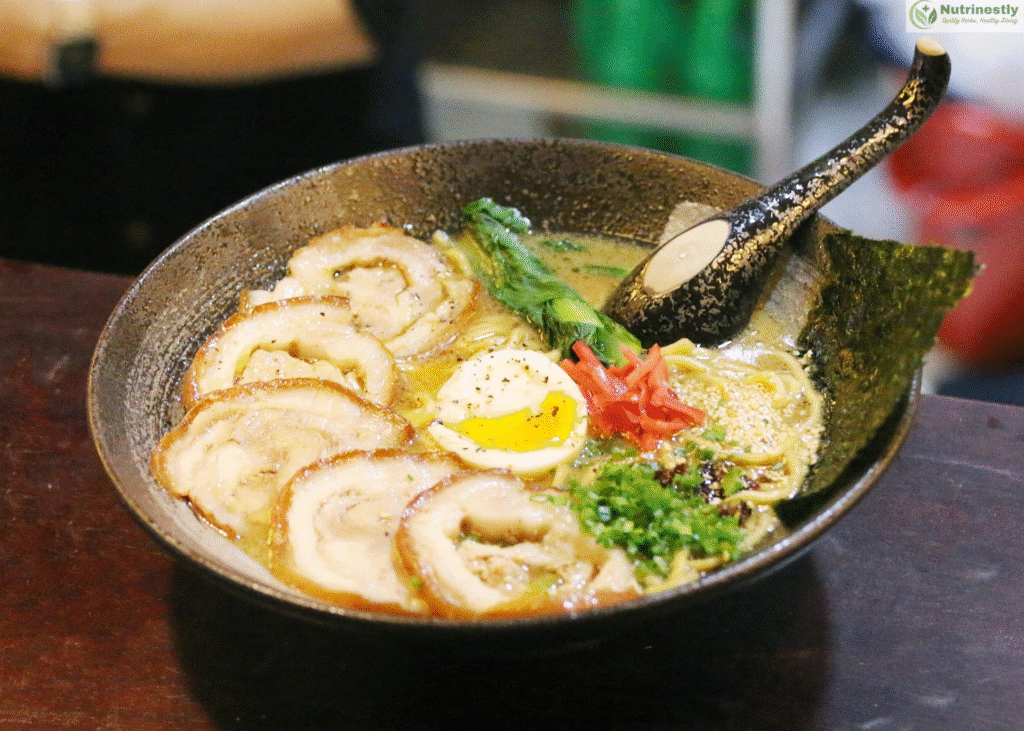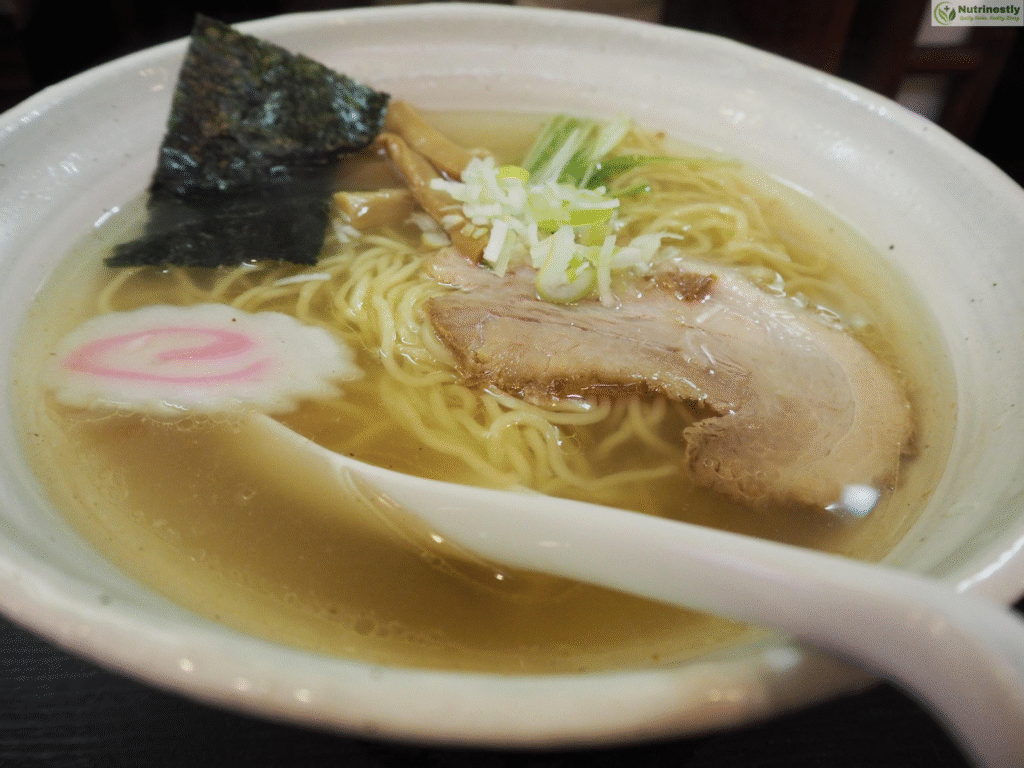Introduction to Low-Sodium Ramen Noodles

Over the past few years, there has been a distinct trend toward healthier diets, and perhaps the most-discussed dietary issue is sodium consumption. Low-sodium ramen noodles have become a favorite among consumers who seek healthier, yet tasty, versions of the popular ramen flavors without the health consequences linked to excessive salt.
Low-sodium ramen noodles are created to offer the same nourishment and satisfaction as regular ramen but with much less sodium per serving. This blog is here to inform you of the health effects of consuming too much sodium, provide tips for choosing or preparing low-sodium ramen, and share flavorful tips to spice up your noodle experience.
The Health Implications of High Sodium Intake
High Sodium and Hypertension
Among the most urgent concerns with excessive sodium intake is its association with hypertension. Too much sodium results in water retention by the body, expanding blood volume and, therefore, blood pressure. This, in the long term, can put excessive stress on the cardiovascular system, causing heart disease, stroke, and kidney disease.
Other Health Risks
In addition to hypertension, excessive sodium intake can also contribute to other severe health conditions such as
- Enhanced risk of stomach cancer
- Osteoporosis because of calcium loss
- Kidney stones and chronic kidney disease
Advantages of a Low Sodium Diet
Adopting a low-sodium diet can have several advantages:
- Reduced blood pressure
- Less risk of heart disease and stroke
- Better kidney function
- Less risk of fluid retention and bloating
Adding low-sodium ramen noodles to your meal can be an easy and effective way of promoting overall well-being.
What is Ramen Noodles
Brief History of Ramen
Ramen was born in Japan but has its origins in Chinese food. It came into prominence after World War II and has since grown into a cultural icon, with numerous regional interpretations and specialized ramen restaurants around the world.
Traditional Ingredients
Traditional ramen is built around four basic components:
- Noodles (usually wheat-based)
- Broth (tonkotsu, miso, shoyu, or shio)
- Toppings (chashu pork, green onions, nori, eggs)
- Seasoning (usually high in sodium)
Nutritional Profile Comparison
Ordinary instant ramen noodles usually have more than 1,500 mg of sodium per serving, whereas low-sodium ramen noodles may have as few as 300-500 mg. The low-sodium versions achieve flavor through other seasoning approaches such as herbs, spices, and umami-containing ingredients.
Popular Low Sodium Ramen Brands
Top Brands
Some brands have seen the need for lower-sodium options and now supply low–sodium ramen noodles. Some of these popular brands include
- Ocean’s Halo: low sodium, under 400 mg, organic and vegan
- Lotus Foods: Whole-grain-based rice noodles and lower sodium
- Koyo Ramen: Lower sodium broth packets and organic
- Dr. McDougall’s Right Foods: Plant-based ramen bowls with an emphasis on health
Comparison of Nutrition
Here is a quick comparison:
| Brand | Sodium (mg) | Calories | Protein (g) |
|---|---|---|---|
| Ocean’s Halo | 360 | 190 | 6 |
| Lotus Foods | 400 | 200 | 5 |
| Koyo Ramen | 430 | 210 | 6 |
| Dr. McDougall’s | 450 | 180 | 7 |
Availability
These alternatives can be found in natural food markets such as Whole Foods and Sprouts or through online sources such as Amazon, Thrive Market, and manufacturer websites.
Creating Your Own Low Sodium Ramen


Homemade Ingredients
Making low-sodium ramen noodles at home provides total control over ingredients. Main ingredients:
- Homemade or low-sodium broth (chicken, vegetable, mushroom)
- Store-bought or fresh low sodium noodles
- Fresh vegetables and lean protein
Low Sodium Broth Recipe
Ingredients:
- 4 cups water
- 1 tbsp dehydrated shiitake mushrooms
- 1/2 onion
- 1 garlic clove
- 1 tbsp low sodium soy sauce
- 1 tsp low sodium miso paste
Instructions:
- Simmer all ingredients in a pot for 20 minutes.
- Strain and use as a base for your ramen.
Customizing Flavors
Use ingredients like ginger, sesame oil, and rice vinegar to create depth without increasing sodium.
Flavoring Low-Sodium Ramen noodles

Natural Herbs and Spices
To enhance the flavor of low-sodium ramen noodles, try these:
- Garlic
- Ginger
- Basil
- Red pepper flakes
- Scallions
- Cilantro
Low Sodium Sauces and Condiments
Opt for:
- Tamari or low sodium soy sauce
- Miso paste (be mindful of the sodium content)
- Coconut aminos (an excellent substitute for soy sauce)
Creative Toppings
- Soft-boiled eggs
- Roasted mushrooms
- Corn
- Nori (seaweed)
- Kimchi (sparingly because of the sodium)
Nutritional Upgrades for Low Sodium Ramen
Vegetables
Add a combination of nutrient-dense vegetables:
- Spinach
- Bok choy
- Zucchini
- Bell peppers
- Broccoli
Protein Choices
For a healthy meal:
- Tofu
- Grilled chicken breast
- Soft or hard-boiled eggs
- Edamame
Healthy Fats
Add richness with:
- A drizzle of sesame oil
- Sliced avocado
- Chia or flaxseeds sprinkled on top
Low Sodium Variations of Classic Ramen Dishes
Tonkotsu-Style (Pork Bone)
Employ a vegetable or mushroom broth base and substitute fatty pork with grilled lean pork slices or tofu.
Shoyu (Soy Sauce)
Employ low-sodium soy sauce thinned with water and seasoned with garlic and ginger.
Miso
Select low-sodium miso paste and accompany it with shiitake broth and sautéed vegetables.
Serving Suggestions
- Edamame or cucumber salad as a side
- Cold soba noodles
- Low sodium pickled vegetables
Tips for Preparing Low Sodium Ramen
Preparing Noodles
- Prepare noodles al dente to preserve texture.
- Rinse with cold water to help minimize excess starch.
Adding Ingredients
- Add vegetables toward the end of cooking time to keep them crisp.
- Add proteins following the boil of the broth but before serving.
Storing Leftovers
- Keep broth and noodles separate to prevent sogginess.
- Heat broth slowly to preserve flavor.
Conclusion and Future of Low Sodium Options
Recap
Low-sodium ramen noodles are a tasty and convenient option for anyone who needs to cut back on sodium but not at the expense of flavor. They offer an easy, satisfying meal alternative that promotes heart health and overall well-being.
Encouragement
Whether you use store-bought or make your own, adopting low-sodium ramen noodles is a move toward healthier food choices. You can indulge in the savory, umami goodness of ramen with ingredients that benefit your body.
Final Thoughts
The movement towards low-sodium, healthier options is more than a trend—it’s a change that’s needed in our diets today. The more people become educated about the advantages, the more they watch for even greater innovation in the realm of low-sodium preparation. Eating conscientiously doesn’t have to mean sacrificing your favorite foods; it means enjoying them smarter.
So go ahead, slurp away; your heart will appreciate it.

